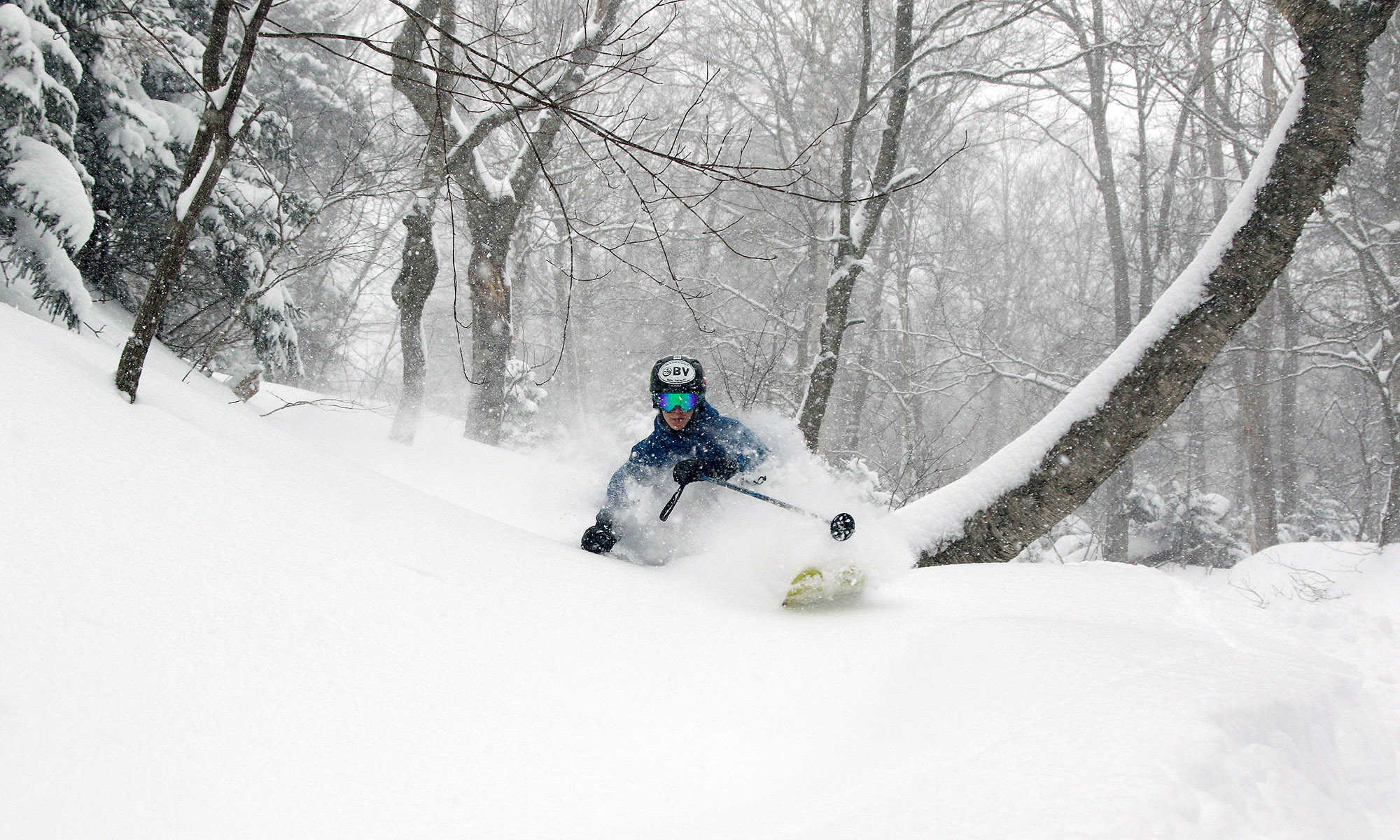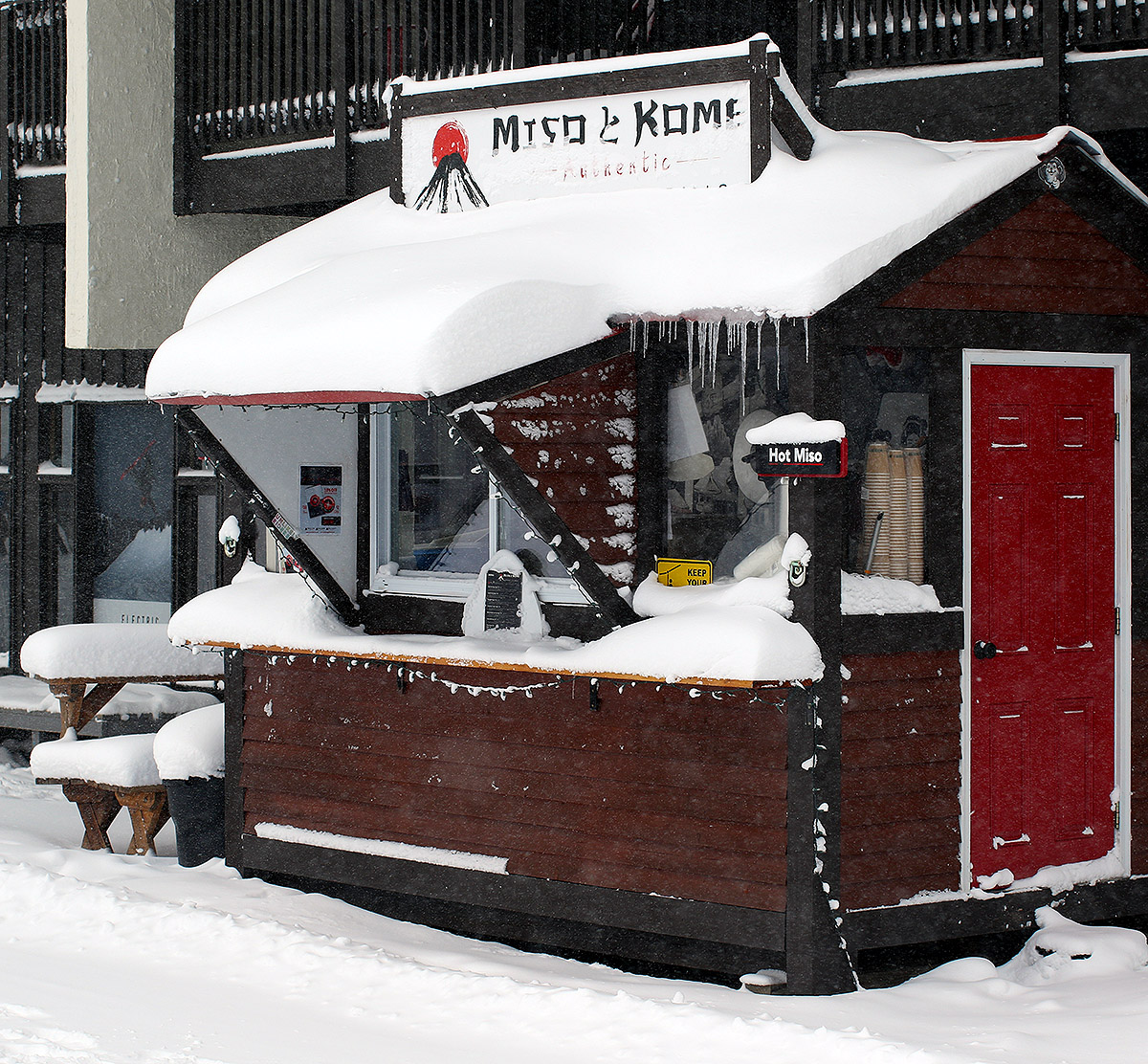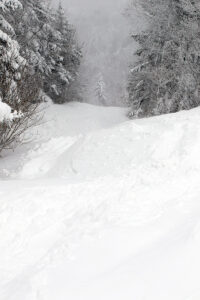
I’d hoped to head up to the mountain for some turns yesterday afternoon to see how accumulations were settling in from our current system, but it was a bit close to sunset after I finished the work I wanted to get done. I wasn’t too worried about it though, since this is another long-duration system, and the snow accumulations are slowly building up. I did manage to get out for some turns this morning on my way into Burlington, so I can report on that outing. In the weekly forecast, today had the coldest temperatures of any day, with valleys in the single digits F. So, in that respect, this wasn’t my preference for days to get on the skis, but it’s been snowing, and it worked out.
In most respects, the weather up at the mountain was sort of status quo for what we’ve had over the past several days – at the Village elevations it was still in the single digits F. In this case, the temperature was barely in the positive category, but it can definitely get far worse in January. A big current factor in comfort on the slopes though is the wind – those winds are still howling out there with this system. With that in mind, I started the morning with an ascent via the Wilderness Uphill Route to get my body up to temperature, and that worked well. Then I was warm enough to take a trip up the Vista Quad and make another run.
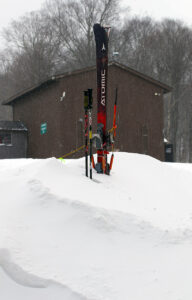
The snow report from Bolton Valley was indicating 6 inches for their 48-hour total/storm total as of this morning, which doesn’t seem like much, but this system has brough decent moisture with it. The flakes have been small in many areas because of poor dendritic growth. Combine that with those winds blowing it around and packing it together, and measuring accumulations in the mountains has been tough. For example, I’ve recorded almost a foot of snow from this system down at my house in the valley, not because we actually got more liquid equivalent than the higher elevations, but because we’re sheltered from the high winds, and the dendrites can actually stack up with loft and not get smashed and compacted. In any event, we’ve recorded about a half inch of liquid equivalent from this storm so far at the house, so the mountains have probably picked up somewhere between a half inch and an inch of liquid. In areas protected from the wind, such as by the Miso Toh Kome hut, there are some snow stacks that give you a nice sense of how much has fallen with this event in unscoured areas, and the stacks looked like they were about 10 inches deep.
In terms of the ski conditions, with a lot of its terrain facing west, those usual exposed areas at Bolton without snowmaking are scoured down to just a couple of crusty inches. Areas out of the wind have lots of great medium-weight powder though. Measurements I took in protected, non-drifted areas in the 2,000’ to 2,500’ elevation range revealed up to 20 inches of powder, so where it’s not blown away, even the lower elevations of the main mountain are really starting to accumulate quite a stack of surface snow atop the base. I skied Lower Turnpike on my touring run at Wilderness, and being protected from the wind, it had great snow wall-to-wall, with some spots having a foot of powder, and others just a few inches of powder if they had seen grooming and/or skier traffic. With the cold temperatures, the snow was a bit slow, but not so slow that I had trouble maintain speed even in those deeper areas of powder. Off the top of Vista, I stayed away from Spillway and Hard Luck, which are much more exposed and get scoured, and chose Vermont 200, which is much more protected. It had just a couple of small, scoured spots, but beyond that it was a playground of 1 to 3 feet of nearly untouched powder depending on whether or not you were blasting through a drift.
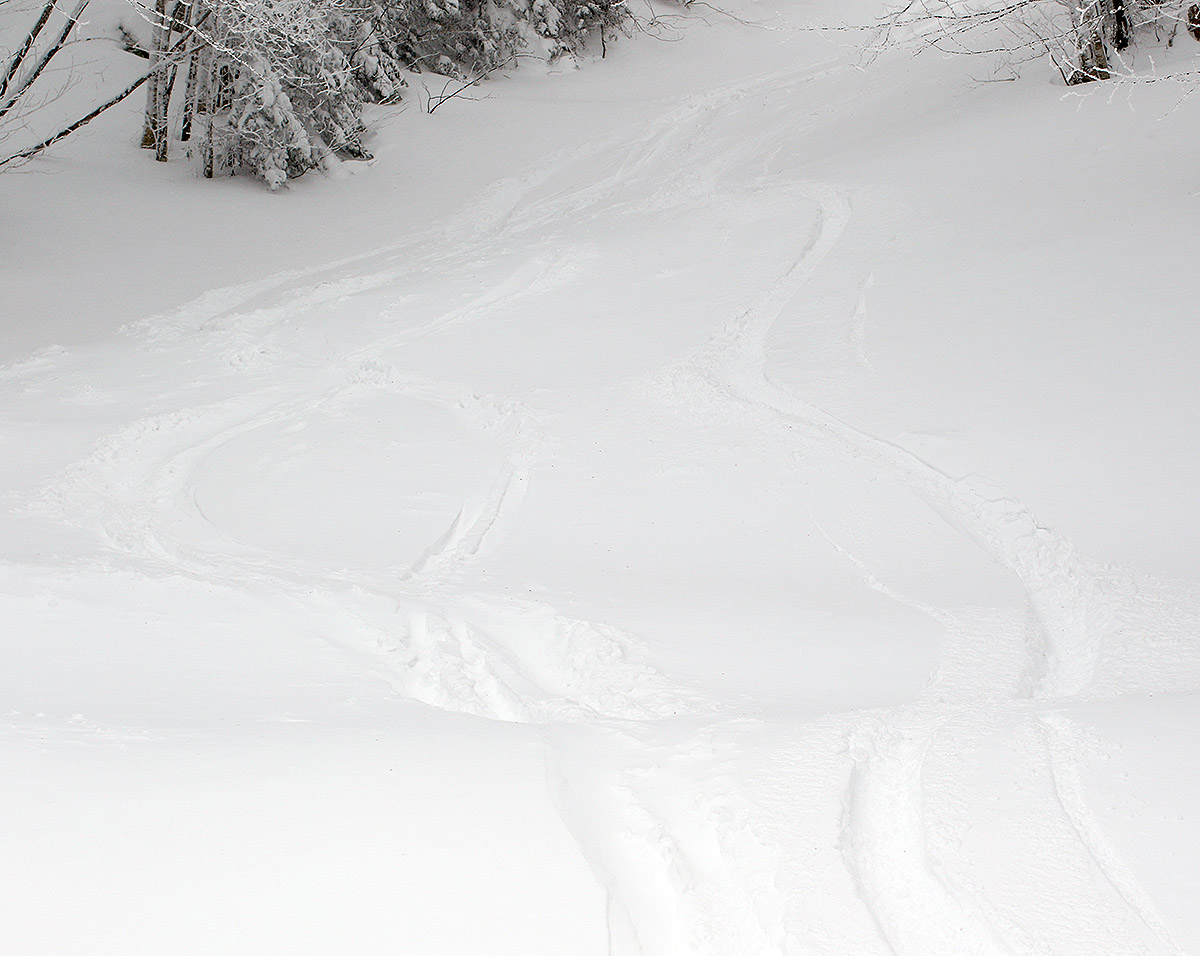
Although we’re not currently getting tons of champagne powder turns from this system with its prodigious winds, I did notice one great thing that this current system is doing. Aside from some nice resurfacing outside of the exposed areas, the winds are really filling in any of those deeper water bars in the lower elevations that just hadn’t managed to get there yet. I really noticed it on Lower Turnpike – there are those certain water bars in lower elevations where you have had to direct yourself to an optimal spot along the width of the trail because it’s got the smoothest transition for crossing. That issue has largely disappeared now with this meaty snow being driven into the hollows of the water bars by those winds.
